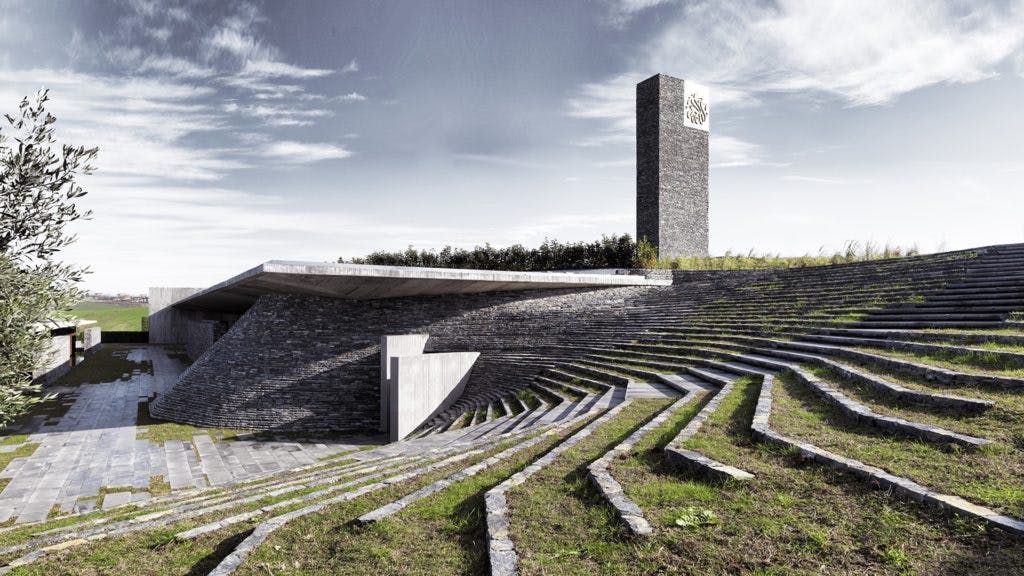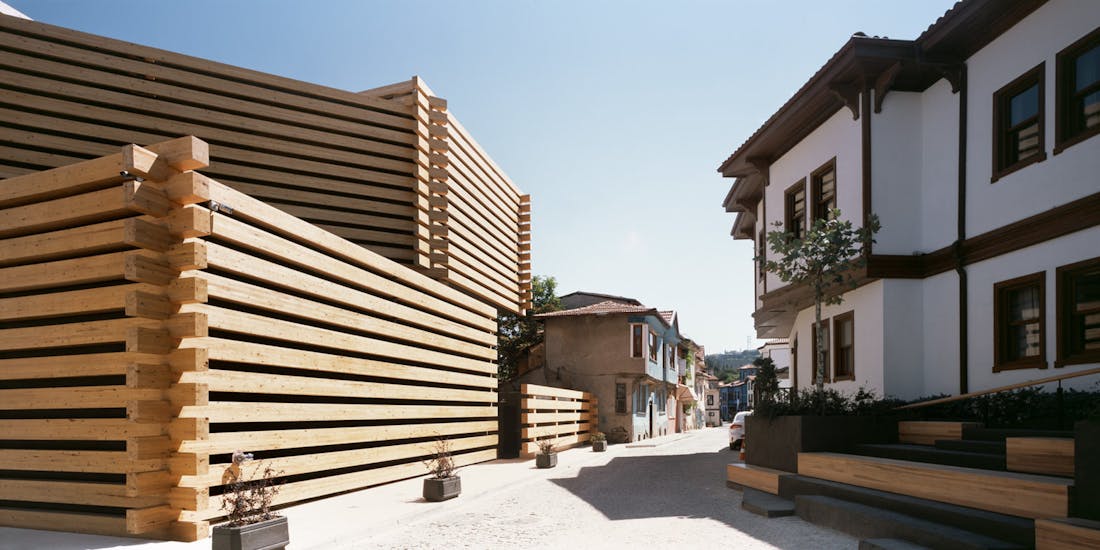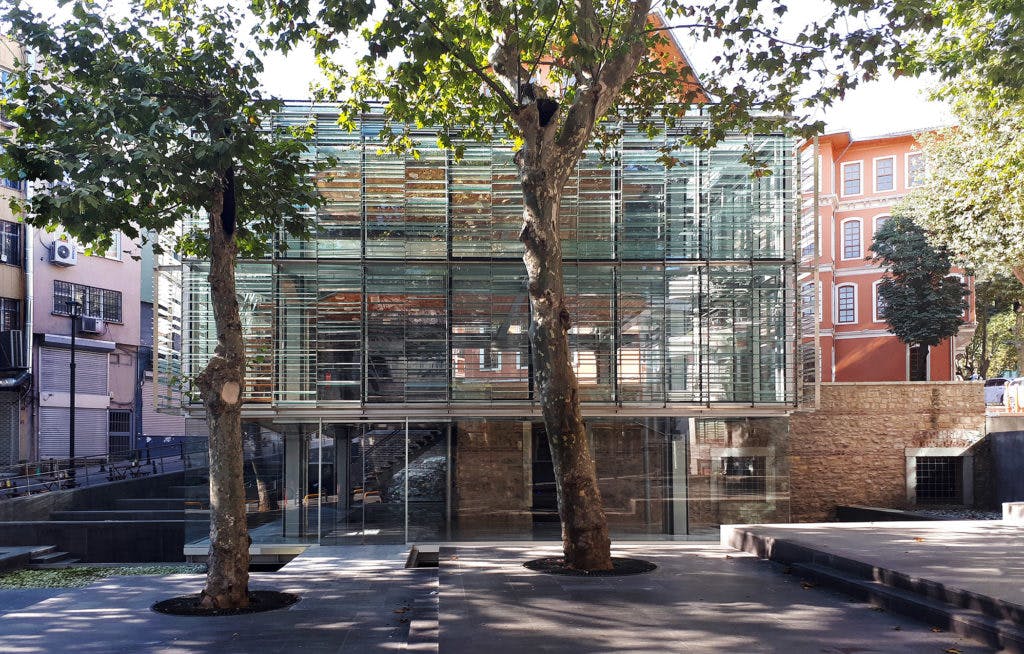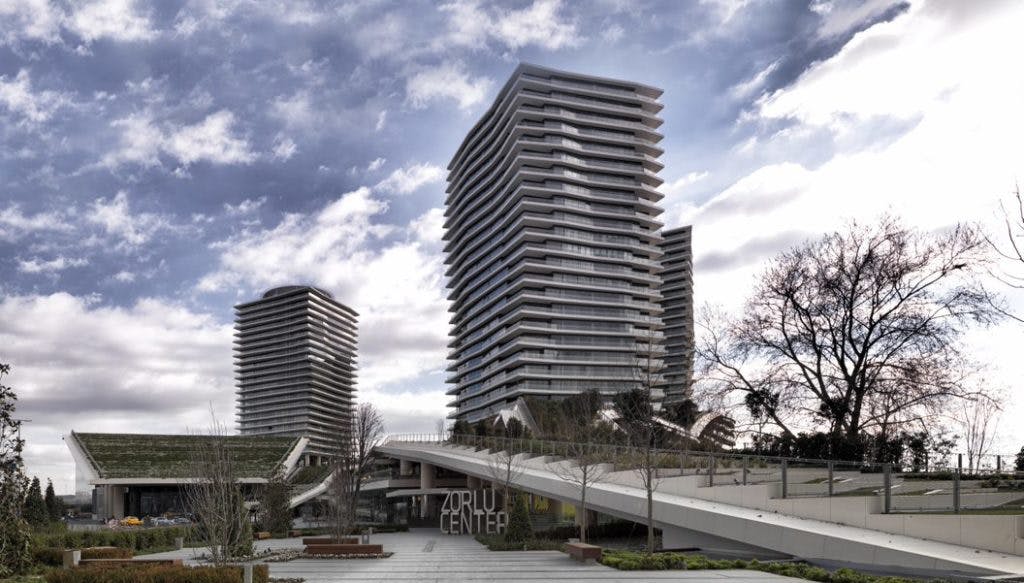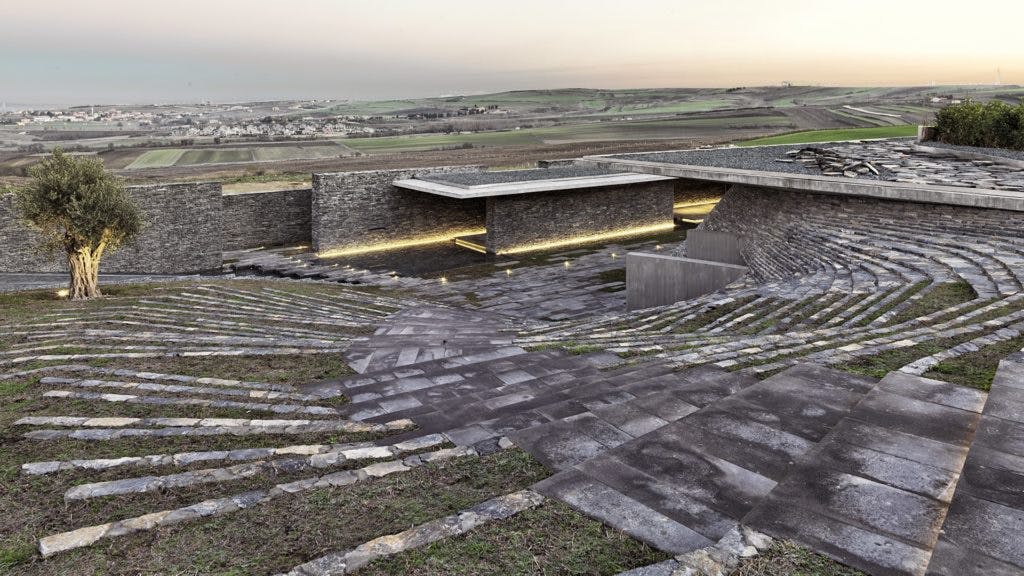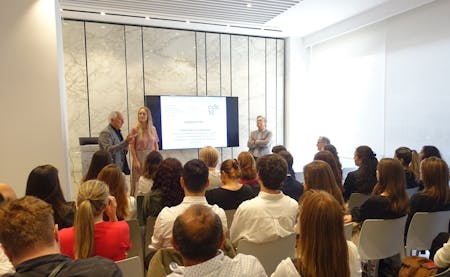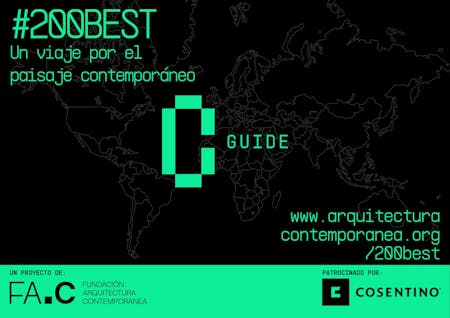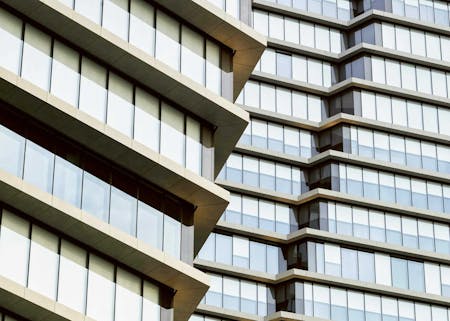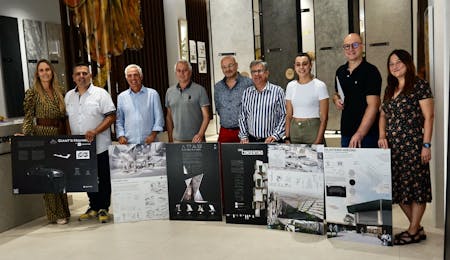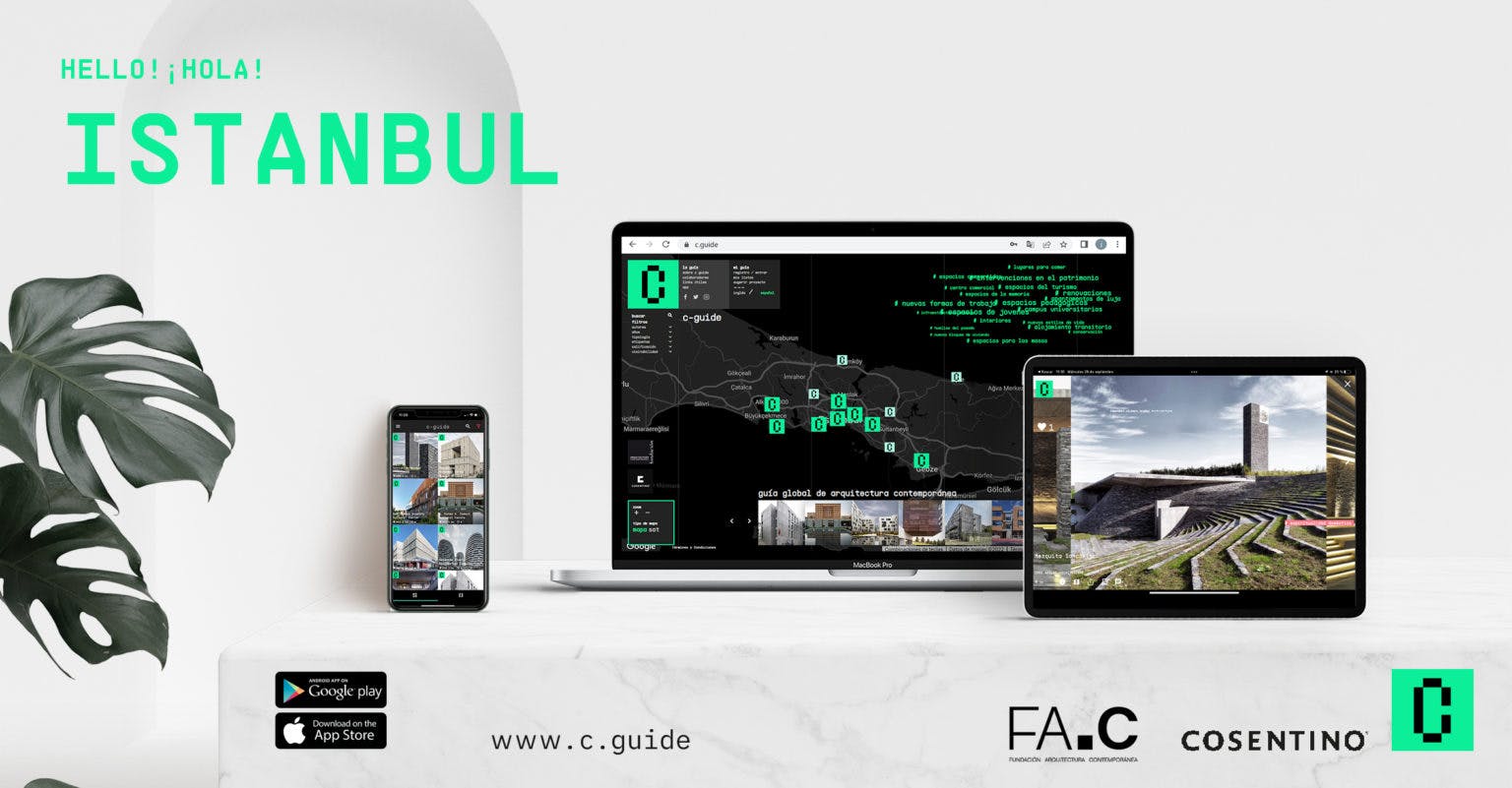
-
It is the fourteenth city to be included in the C-guide, as a result of the collaboration between Fundación Arquitectura Contemporánea (Foundation for Contemporary Architecture or FAC, in Spanish) and Cosentino.
-
Istanbul joins ‘World Habitat Day’ with an array of 105 works of art
Istanbul has become the fourteenth city to be added to the catalogue of the C-guide, the guide to contemporary architecture with a global vision. A selection of the best contemporary architecture in the Turkish city is made up of 105 recent works. These have been chosen by 38 leading professionals of the scientific committee from more than 200 projects that had been nominated by the editorial team in collaboration with local entities and specialised institutions. The guide, a project born out of the strengthened partnership between Fundación Arquitectura Contemporánea (FAC) and Cosentino, aims to promote knowledge and recognition of the most outstanding contemporary architecture from around the world.
The addition of Istanbul coincides with World Habitat Day and the start of Urban October. The C-guide has set aside this day for Istanbul because of its symbolic value as a dialogue between East and West. In keeping with the theme of this year’s World Habitat Day, ‘Mind the gap. Leave no one and no place behind’, the C-guide proposes a look at contemporary architectural practice in Istanbul as a key element for influencing the major global issues of human habitat, including the growing inequality in large metropolises. The UN’s urban month will culminate with World Cities Day on 31st October, under the theme ‘Act local to go global’.
The C-guide, launched in December 2019 as a free multi-device platform, invites visitors to experience the architectural space from an educational perspective. There are two ways to explore it: by travelling to the place and using the app as a city guide, or from home, browsing the web to be transported momentarily to places like Istanbul. With the addition of Istanbul, the guide continues to establish itself as a worldwide network of the most recent and outstanding architecture, with more than 2,300 works located in London, Los Angeles, Sydney, Paris, Barcelona, Amsterdam, Chicago, Dubai, São Paulo, Córdoba, Shanghai, Cape Town, New York and, most recently, the Turkish city.
A bridge between Europe and Asia, Istanbul is a place of special historical significance (a World Heritage Site since 1984) and, at the same time, a metropolis that has seen exponential growth in recent decades. Its contemporary architectural practice responds to these two fundamental needs: the preservation and upgrading of the historic city and the generation of a new urban texture to cope with today’s liquid modernity. In both cases, the best examples of contemporary architecture in the city featured in the C-guide show a willingness to listen to what the context has to say, combined with an expressive desire for modernity.
Historic city. Restoration to bring it up to date
The work of local architecture studio Cafer Bozkurt stands out among the landmarks of the historic city. Their projects are based on a thorough analysis of the historical layers that make up the site.
For instance, in the renovation of the Kılıç Ali Paşa hamam, the architects have restored not only the original rich masonry, but above all the spatial experience of the hamam as it was conceived. In the case of the project for the entrance building of the Theodosius (Şerefiye) Cistern, the architects decided, after a historical analysis of the built fabric in the area, to expose the Byzantine water infrastructure by creating a new public square and installing a cube in the same direction as the underground hall, perched on one of its corners, with a scale inspired by different historical objects in the area. This opens a contemporary door to a previously inaccessible historical and physical stratum.
Among the works in public spaces, the new Beşiktaş market, designed by the GAD studio, stands out, which manages to reproduce the hustle and bustle of the city’s traditional markets at a crossroads by means of a lightweight and efficient roof.
Conversion of the industrial legacy. Cultural factories
In line with the global trend of reusing industrial heritage, Istanbul offers some remarkable examples. These include the transformation of a former salt deposit by Erginoğlu & Çalışlar Architects and the Museum of Painting and Sculpture by Emre Arolat, which is part of the urban redevelopment project for the port area of Karaköy. In this case, the architects use the skeleton of a port building as the basis for the new project. Not far from Emre Arolat’s museum is Istanbul’s new contemporary art museum (Istanbul Modern), designed by Renzo Piano, which is nearing completion.
In this section, it is also worth mentioning the recently opened Müze Gazhane (Gasworks Museum), a former gasworks with over 130 years of history which, thanks to a neighbourhood movement, has been transformed into a cultural complex with an open and public function.
A final example to mention here is the reclamation of the former Pendik mine, which DS Architecture has turned into a public park, preserving the record of the site’s mining history and helping to interpret it.
The new city
In addition to the work of renovating the historic centre, contemporary architecture has taken up the challenge of generating urban conditions in the new peripheries, where the urban sprawl of the city has often resulted in a lack of facilities and public spaces. In this regard, it is worth highlighting the Bahriye Üçok Kindergarten, by Dilekci Architects, or the inspiring Sancaklar mosque, by Emre Arolat, which, despite being located near a main road, manages to create a space of tranquillity and spirituality thanks to a topographical design that leads the faithful towards an underground cavern.
Other projects that produce new types of public squares for commercial and office uses typical of the peripheries of the world’s metropolises are also noteworthy. For example, the ‘Zorlu Center’ mixed-use complex, consisting of a multi-layered topography with cultural and commercial uses, on top of which several residential and office towers are built. The Meydan shopping centre, by the Spaniard Alejandro Zaera, also uses a topographical strategy to turn a shopping centre into a public space accessible to the community.
MORE INFO
- ABOUT C-Guide
- web: c.guide
- App (iOS)
- App (Android)
- Vídeo: C-guide en inglés
- Spot: C-guide en inglés
Tags: Architecture, c guide, Istanbul | 2 years ago | Written by: Cosentino

 Back
Back